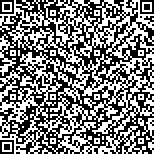| 摘要: |
| 信号转导和转录激活因子(signal transducers and activators of transcription, STAT)是兼具信号转导和转录活化功能的一类蛋白,在细胞增殖、分化、迁移、凋亡等过程中发挥重要作用。目前,关于鱼类STAT基因的分子特征及其在病原感染过程中表达模式研究仍相对较少。克隆了大黄鱼STAT6基因(LcSTAT6)的开放阅读框序列,其全长2 211个核苷酸,编码1个含736个氨基酸的蛋白质。通过氨基酸序列分析发现, LcSTAT6蛋白具有5个保守的功能结构域,包括氨基端结构域、卷曲螺旋结构域、DNA结合结构域、SH2结构域和转录激活结构域。系统进化分析显示, LcSTAT6和其他硬骨鱼类STAT6聚为一支,与棘头梅童鱼(Collichthys lucidus) STAT6的亲缘关系最近,与两栖类、鸟类和哺乳类STAT6的亲缘关系相对较远。实时荧光定量PCR结果显示, LcSTAT6在所检测的大黄鱼各组织或器官中均有表达,尤其在血液、鳃、脾脏等免疫相关组织中表达量相对较高;蛋白免疫印迹实验显示其蛋白也在鳃和脾脏中高表达。溶藻弧菌(Vibrio alginolyticus)感染后,大黄鱼头肾和脾脏组织中LcSTAT6的mRNA水平都显著上调,达到峰值时分别上升了3.82倍和6.54倍;同时大黄鱼头肾组织中LcSTAT6蛋白及其磷酸化蛋白水平也明显上调,头肾白细胞细胞核内LcSTAT6的蛋白量也显著增加。此外,溶藻弧菌感染后, LcSTAT6下游效应基因MHCⅡα和Arginase-1表达水平显著升高。这些研究结果表明LcSTAT6可能在大黄鱼抗病原感染的免疫应答中发挥重要作用,该结果对于深入认识STAT蛋白在鱼类免疫防御中的调控机制具有重要意义。 |
| 关键词: 大黄鱼 STAT6 多克隆抗体 表达模式 免疫应答 |
| DOI:10.11693/hyhz20211200326 |
| 分类号:Q789;S965 |
| 基金项目:国家自然科学基金面上项目,32073007号;福建省自然科学基金杰青项目,2021J06016号;财政部和农业农村部:国家现代农业产业技术体系资助,CARS-47号;福建农林大学优博项目,324-1122YB063号。 |
|
| MOLECULAR CHARACTERIZATION AND EXPRESSION ANALYSIS OF STAT6 IN LARGE YELLOW CROAKER (LARIMICHTHYS CROCEA) AFTER VIBRIO ALGINOLYTICUS INFECTION |
|
YUAN Xiao-Qin1, CHEN You1, RONG Yi1, MENG Yu-Fan1, REN Chao-Qun1, MU Yin-Nan1, CHEN Xin-Hua1,2
|
|
1.Key Laboratory of Marine Biotechnology of Fujian Province, College of Marine Sciences, College of Life Sciences, Fujian Agriculture and Forestry University, Fuzhou 350002, China;2.Laboratory for Marine Biology and Biotechnology, Pilot National Laboratory for Marine Science and Technology (Qingdao), Qingdao 266237, China
|
| Abstract: |
| Signal transducers and activators of transcription (STAT) is a type of protein with both signal transduction and transcription activation function,and plays an important role in cell proliferation,differentiation,migration and apoptosis.In recent years, STAT6 has been identified in several fish species.However,very few information is available about its expression pattern during pathogen infection.We cloned the full length of open reading frame (ORF) of STAT6 gene (LcSTAT6) in large yellow croaker (Larimichthys crocea),which contained 2 211 nucleotides encoding a peptide of 736 amino acids.The deduced LcSTAT6 protein contained five typical functional domains:N-terminal interaction domain,coiled-coil domain,DNA binding domain,SH2 domain,and transcriptional activation domain.Phylogenetic analysis showed that LcSTAT6 formed a separate clade with sequences from other fish species and was far from the clades of avian,amphibian,and mammalian STAT6 proteins.The LcSTAT6 was most closely related to Collichthys lucidus STAT6.LcSTAT6 mRNA was constitutively expressed in all examined tissues of large yellow croaker,especially higher in blood,gill,and spleen.The Western blot showed that LcSTAT6 was highly expressed in gills and spleen.After being infected with Vibrio alginolyticus,the mRNA expression level of LcSTAT6 was elevated in head kidney and spleen,and its phosphorylated protein level in head kidney of large yellow croaker were significantly up-regulated.Indirect immunofluorescence assay showed that LcSTAT6 was activated and transferred into the nucleus of leukocytes from head kidney after V.alginolyticus infection.Moreover,the transcriptional levels of the downstream genes (MHCПα and Arginase-1) of LcSTAT6 were also up-regulated in head kidney and spleen tissues after V.alginolyticus infection.These results indicate that LcSTAT6 may play important roles in the immune response to pathogen infection of large yellow croaker,and provide valuable information for understanding the regulation mechanism of STAT6 in fish immune defense. |
| Key words: large yellow croaker (Larimichthys crocea) STAT6 polyclonal antibody expression pattern immune response |
